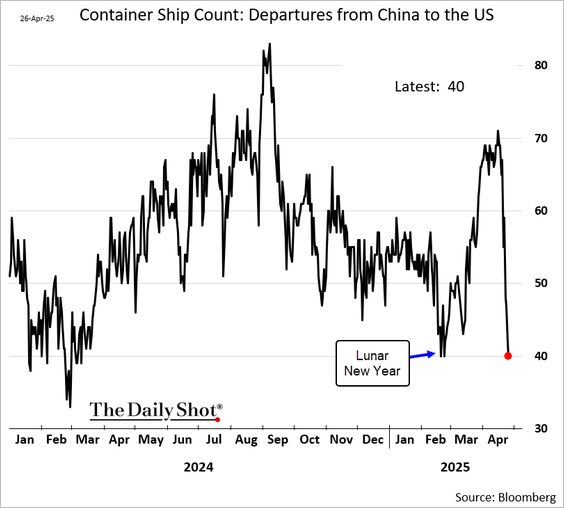Countdown Begins for Tariff Fallout
Wall Street reacted quickly in March and April to the potential economic fallout from the U.S. trade war with China. While the headlines have abated, uncertainty remains with us. The consequences for Americans are still coming. This situation reminds me of the news in February 2020. The life changes that were coming were difficult to foresee until they arrived. Estimating the timing of the tariff impact is not rocket science. I believe it will reach us in approximately two weeks.
Chart of the Week
Bloomberg Businessweek published this cover to explain the purpose of tariffs: Increase U.S. manufacturing. I am a fan of U.S. manufacturing, and global trade is good. No country has benefited more from globalization than the United States. The pendulum has swung, and our country is vulnerable to disruptions. The goal of the trade war is admirable from that perspective. The abrupt shift to tariffs as a solution has left the United States isolated on the world stage. That is a long-term problem. In the short term, the impact has been a great uncertainty.
It appears every organization is waiting. The Federal Reserve, which meets on Wednesday, is waiting to make changes to monetary policy. Corporations are waiting on capital projects. Importers are waiting on inventory. Who wants to pay a 150% tariff if it could come back down tomorrow, next week, or next month?
Economic Conditions
Global trade can be volatile and seasonal. This graph illustrates a February/March inventory build, followed by a steep April decline. While everyone is wondering about the inflationary impact of tariffs, this chart suggests the possibility of another scenario: fewer goods available. I am not an expert on global trade logistics, but it is time to take this seriously.
It takes a container ship roughly 2-3 weeks to reach a U.S. port and approximately 1-2 weeks before it reaches the shelves of a local store or your front porch. Based on this simple math, the decline in global trade that began in April should reach us by early May. We will see it when prices go up, or the shelves are not full of merchandise, or both.
As shipping slows, so could jobs in logistics: Port workers, truckers, and the restaurants and other businesses that support them. I have little reason to worry, but it is a real possibility in May.
Keep reading with a 7-day free trial
Subscribe to SFS MarketPoint® to keep reading this post and get 7 days of free access to the full post archives.




